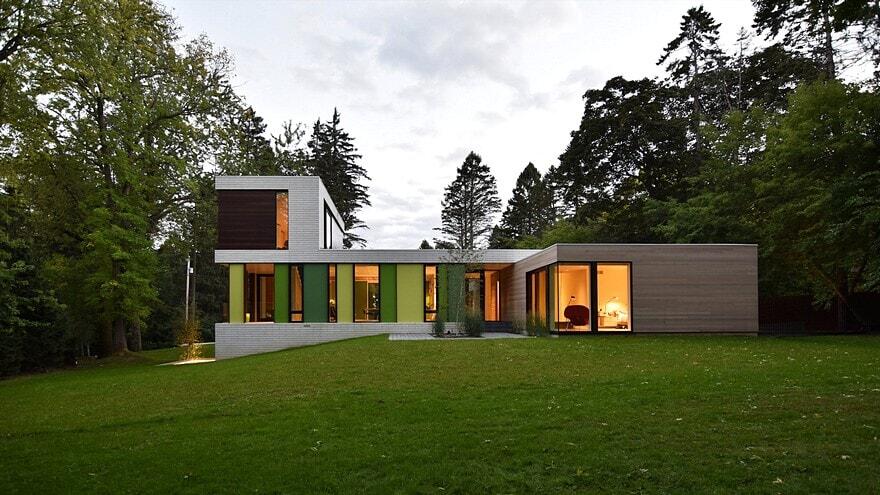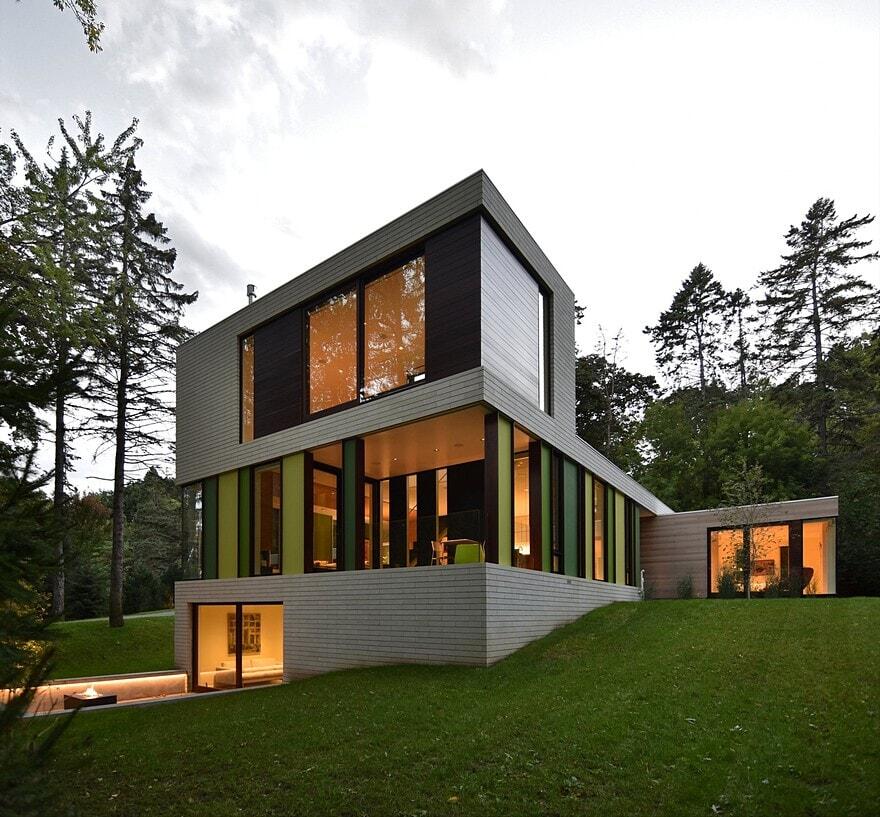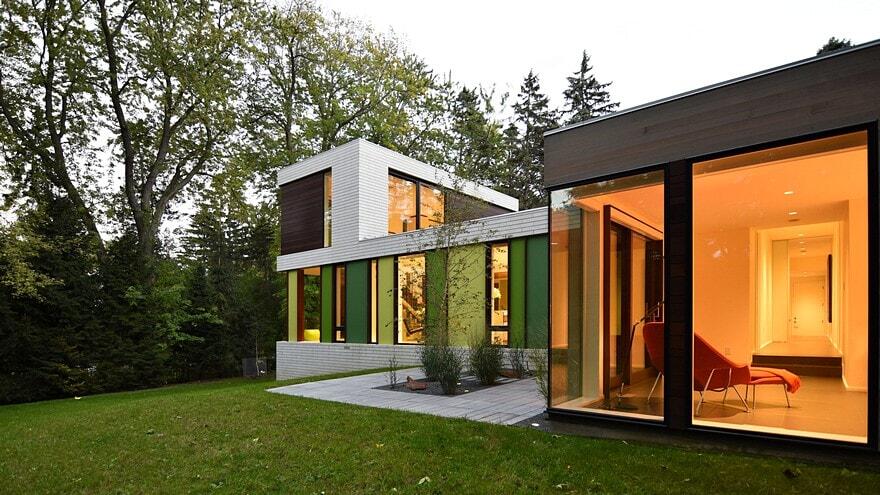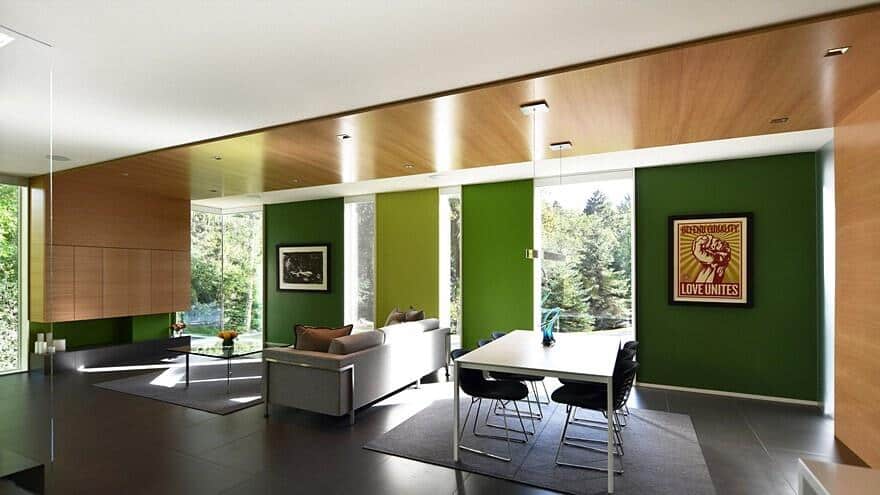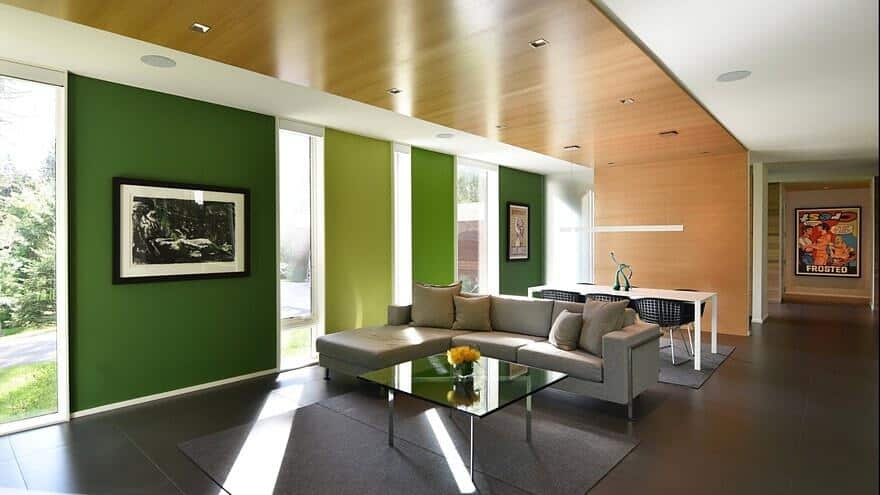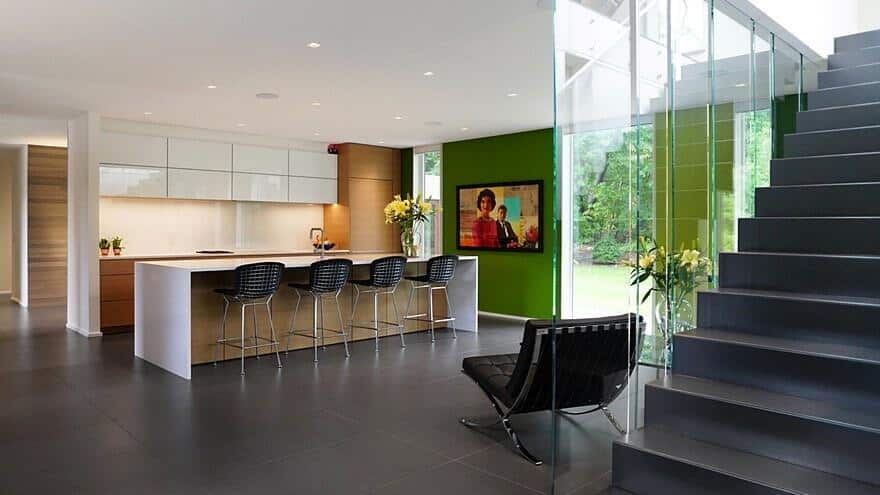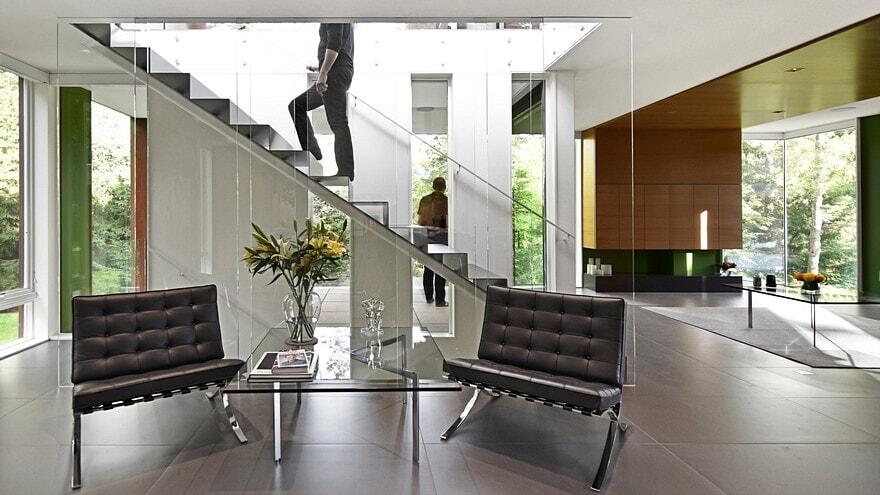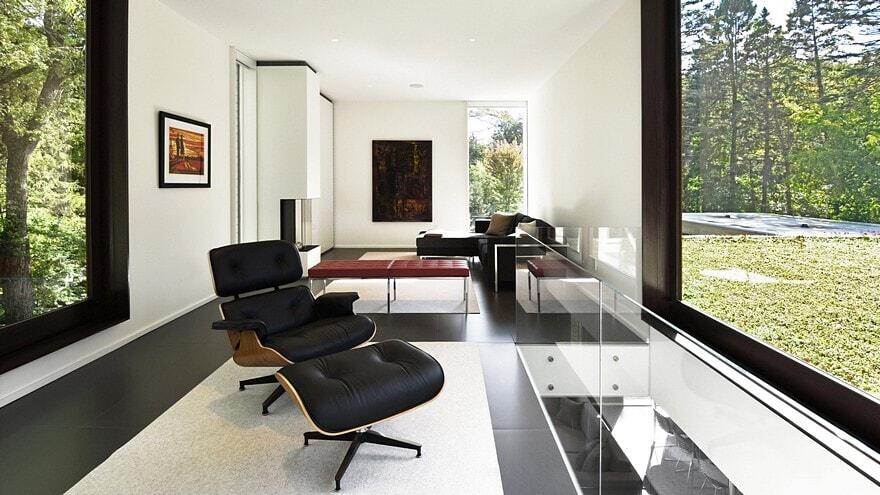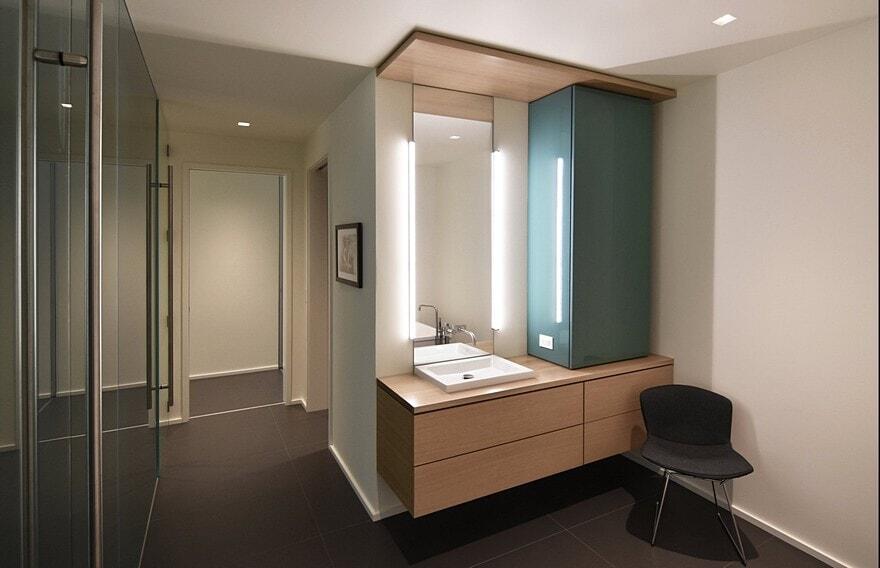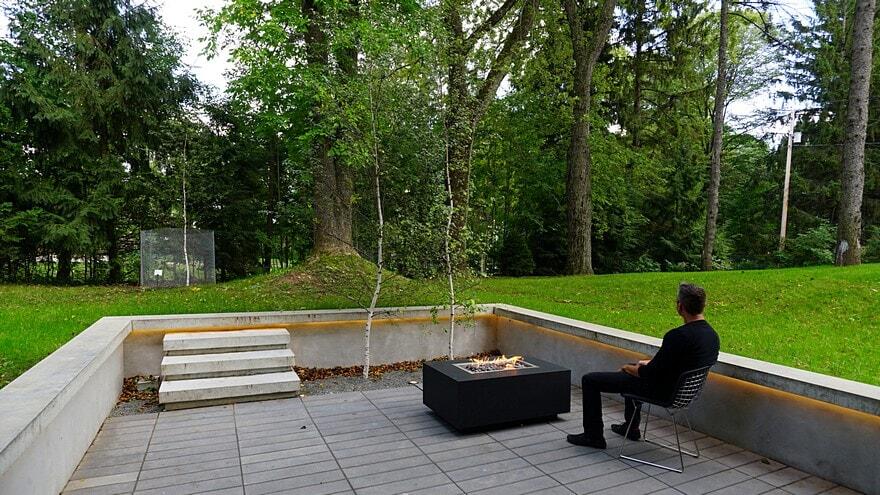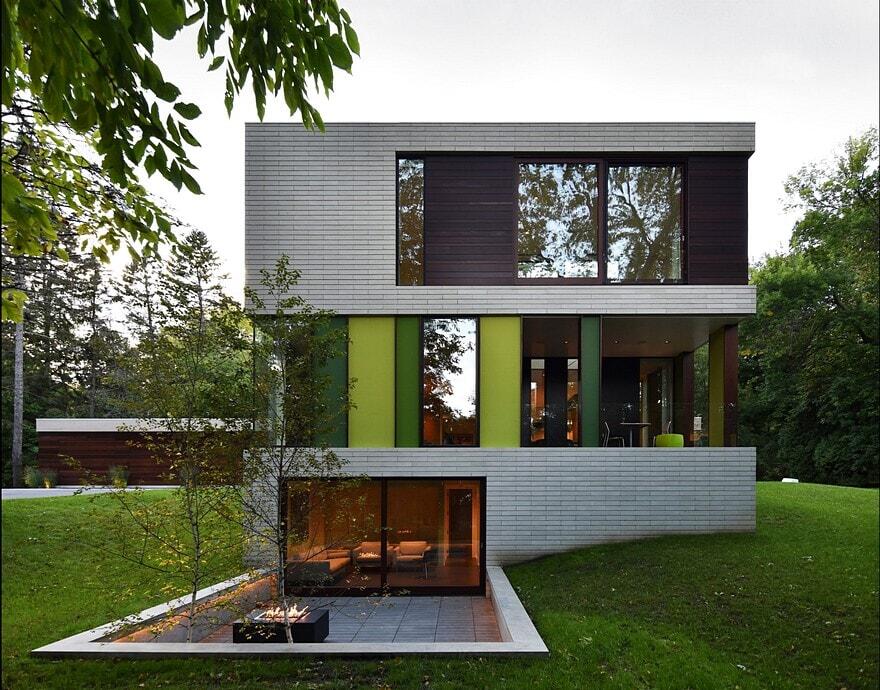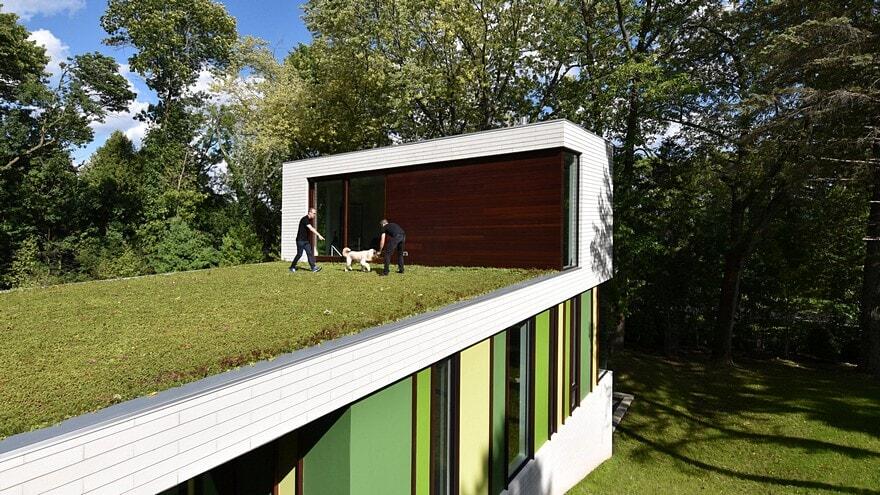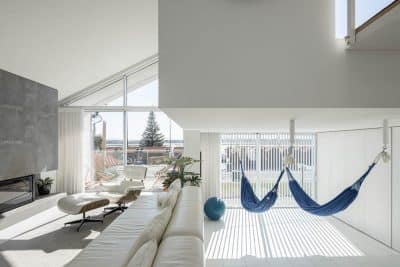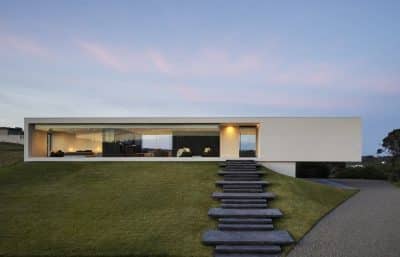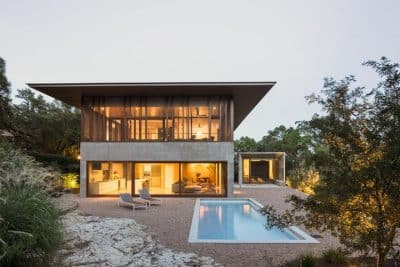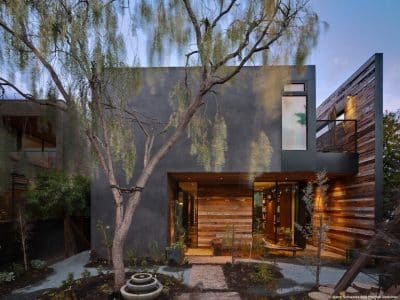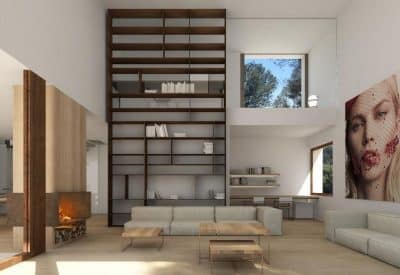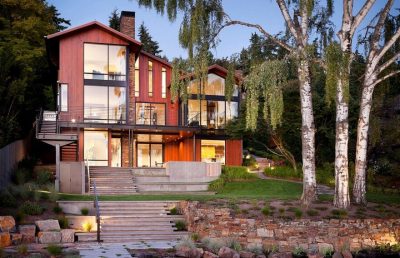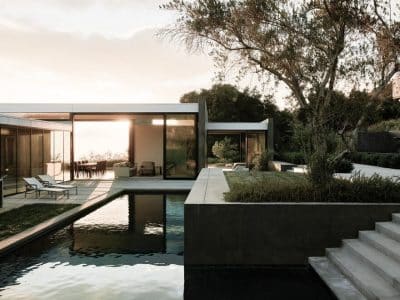Architects: Johnsen Schmaling Architects
Project: 510 House
Principals-in-Charge: Brian Johnsen, AIA and Sebastian Schmaling, AIA, LEED AP
Project Team: Matt Wendorf, P.J. Murrill, Ben Penlesky
Location: Milwaukee, Wisconsin, USA
Photographer: John J. Macaulay
The 510 House is a private residence located in a postwar suburb on Milwaukee’s north shore, its volume carefully embedded in the site’s gently sloping contours and cradled by the mature trees and thick underbrush lining the property’s edges.
The owners, a professional couple with busy work schedules, asked for a house that would accommodate their conflicting desires for privacy and serenity on one hand, and for the frequent hosting of social events on the other.
In response, the program of the house was organized as two interlocking building forms, their “T” configuration bifurcating the site into a “public” entry court for visitors and vehicles, and a private, visually shielded greenspace in the back. Parking, service functions, and the main bedroom suite are consolidated in a long, single-story bar, a narrow, wood-clad volume that straddles the two sides of the property along its western edge.
Spaces for guests and entertainment are housed in a complementary, perpendicular volume defined by a continuous concrete block ribbon that engages the wood-clad bar, negotiates the dropping topography of the site, and ultimately folds up to form an elevated observatory with views of the surrounding tree tops and the shores of Lake Michigan in the near distance.
The deeply recessed entry vestibule, marking the junction of the two interlocking building forms, provides access to both private and public quarters and leads into the adjacent open living hall – the social epicenter of the home where the owners and their guests can cook, dine, and lounge together, all in a commodious space defined by a series of carefully variegated, green-hued perimeter walls.
The color green, whose spectral wavelength of 510 nanometers became the project’s namesake, serves as an architectural device to infuse the interior year-round with the lush tones of summer’s verdant but short-lived greenery surrounding the site – an abstract and deliberately cheerful echo of nature’s chromatic vibrancy, particularly potent during those long, protracted winter months when the actual apertures of the house frame somber views into Wisconsin’s frozen landscape.
The green perimeter walls extend their interior hues to the exterior, where they express the volume of the living hall as the building’s proud piano nobile – a distinct and intelligible architectural element suspended within the folding concrete ribbon of the main building mass to formally emphasize the primary activity hub of the house.
An open, linear kitchen runs along one side of the living hall. The pantry wall transforms into a continuous wooden ceiling liner that spatially defines the dining and lounging area and folds down at the opposite end to accommodate the built-in media cabinet. A complimentary small sitting area faces the kitchen island and is backed by tall sheets of glass that enclose the delicate steel stairs beyond. The stairs lead up to the observatory, which provides access to an expansive vegetated roof, and down to a small guest lounge and bedroom suite, which spills out to an intimate sunken terrace with a fire pit.

